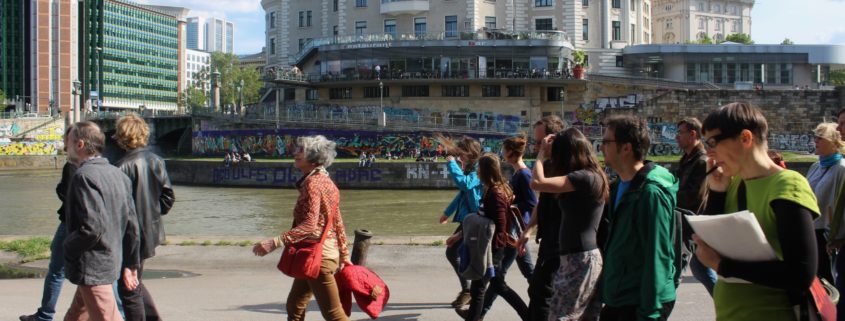
Jane’s Walk
What is a Jane’s Walk?
Jane’s Walks are free, locally organized walking tours, in which people get together to explore, talk about and celebrate their neighbourhoods. Where more traditional tours are a bit like walking lectures, a Jane’s Walk is more of a walking conversation. Leaders share their knowledge, but also encourage discussion and participation among the walkers.
A Jane’s Walk can focus on almost any aspect of a neighbourhood, and on almost any topic you can think of.Walks can be serious or funny, informative or exploratory; they can look at the history of a place, or at what’s happening there right now. Anyone can lead a walk — because everyone is an expert on the place where they live!
Some examples: A walk in Colchester, England was led by two brothers, aged 6 and 4, who showed walkers around their favourite park and shared interesting historical facts about the local castle. In Ljubljana, Slovenia, a city councillor came on a walk to discuss the history and potential future of the area around a stalled construction site.
In the heart of Toronto, Canada, a Queer Newcomer Youth walk was led by a group of young people who had all arrived in the city recently, but had found a welcoming community there. In Calcutta, India, a group set out to explore the wetlands at the city’s edge.
Why was Jane’s Walk started?
Jane’s Walks can be educational, and a lot of fun. You can meet your neighbours, make new friends, and exchange business cards with new contacts. You can learn something new, and share what you know. But there are some big ideas behind these walks as well — and they come from Jane Jacobs, the organization’s namesake.
Jacobs was not a city planner by training; she was just a concerned citizen who spent a lot of time observing city life around her, first in New York City, then in Toronto. From her observations, she developed some theories about what makes a city a great place to live. After she passed away in 2006, Jane’s Walk was founded in Toronto by a group of her friends and colleagues who wanted to honour her ideas and legacy.
In her book The Death and Life of Great American Cities, Jacobs wrote:
“Cities have the capability of providing something for everybody, only because, and only when, they are created by everybody.”
Jacobs believed in walkable neighbourhoods, urban literacy, and cities planned for and by people. That is, for a city to work, the people who live there must be involved in decisions about how the city grows and is run. Staying informed about civic issues, learning the basic concepts of urban planning, and meeting the people who make the decisions are all good ways to do this — and are all things you can do on Jane’s Walks.
Who is it for?
The Jane’s Walk audience includes:
- Anyone who enjoys getting to know their city and neighbours.
- People who want to participate in meaningful conversations about the social and built future of their neighbourhoods.
- People engaged in the work of building cohesive communities and improving the walking environment.
- People who want to change their cities and neighbourhoods, for example to narrow the gap between the haves and have-nots in our cities and towns.
- Youth and children who experience the impact of current transportation choices disproportionately, but who are rarely consulted on their aspirations for walking or cycling.


